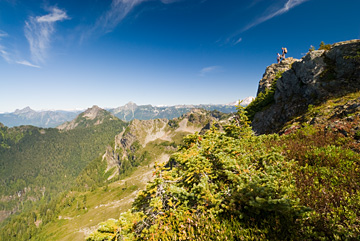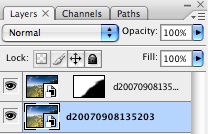Many times in landscape photography the exposure range of a scene is beyond the capabilities of the film or sensor to capture. One common technique, put to tremendously successful use by photographer such as the late Galen Rowell, is split neutral density filters. These darken one part of the image, thus allowing the camera to record detail throughout the scene. The filters have some issues for me, though. Primarily, the split is a straight line, and the scenes I shoot rarely have an exposure difference that can be fixed with a straight line. This means that the image will have to be touched up in Photoshop after the fact to account for a meandering region of exposure difference. With digital capture using RAW, however, the RAW file can be double processed, once for the dark areas and once for the light areas, and the two overlayed. This works great as long as the RAW file contains detail across all of the exposure ranges you wish to capture. If the highlights are white or the shadows black, no detail can be recovered.
Double processing is very easy. First process the RAW file for either region. Here is a shot processed for the foreground:

Processed for Foreground
Next I processed the file for the background, darkening it slightly, and layered it on top of the foreground in Photoshop. I selected the foreground region, feathered the selection, and used the selection to add a layer mask to the background layer so that only the background parts of the background processed image show through.

Photoshop Layers
Putting the double processed images together like this results in an image with a better rendition of the exposure as how a human would see it.
I admit that this is a mild case, but the technique is the same. Do not keep throwing away images because either the highlights are too bright or the shadows too dark. Shoot RAW and double process. If the exposure range is still to large, double shoot on a tripod.

No comments:
Post a Comment